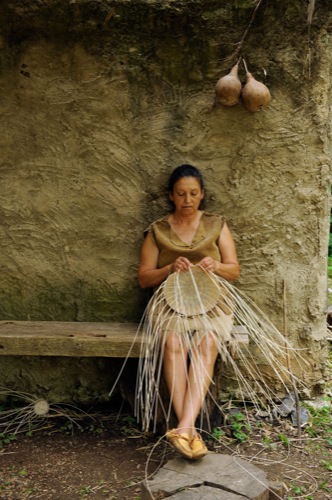
Courtesy Oklahoma Tourism
Oklahoma was originally set aside as Indian Territory; many of the tribes in the eastern and southeastern United States were forcibly moved there in the 1830s. At one time, nearly 70 native and relocated Indian tribes were found throughout the state.
Today, 39 American Indian tribes are still located in Oklahoma, and several of them are in the Green Country region. Miami alone is home to nine Indian tribal headquarters, and the local Dobson Museum has artifacts from those tribes and others.
One of the most active tribes in portraying its history and tapping into the tourism market is the Cherokee, whose home in Tahlequah is the site of the Cherokee Heritage Center and the restored Cherokee National Capitol, the Cherokee Supreme Court Building and the Cherokee National Prison.
The Cherokee Heritage Center features a museum with six interactive galleries that focus on specific aspects of Cherokee history and culture, and a re-created Ancient Village depicting Cherokee life before contact with Europeans.
The Five Civilized Tribes Museum, housed in an 1875 Indian Agency building in Muskogee, is a tribute to the heritage of the Cherokee, Creek, Chickasaw, Choctaw and Seminole tribes. It exhibits the works of famous Native American artists such as the late Jerome Tiger and Willard Stone through an art gallery and extensive displays.
Six tribes that settled in the Ponca City area are honored at the Standing Bear Park, Museum and Education Center. A 22-foot bronze statue of Ponca Chief Standing Bear is surrounded by a 60-foot-diameter circular viewing court with the official brass seals of the six area tribes: Osage, Pawnee, Otoe-Missouria, Kaw, Tonkawa and Ponca.
The 63-acre park has walking trails that feature displays on each of the tribes, and the museum has artifacts, artwork and educational material.
Pawhuska is the home of the Osage Nation and has a museum filled with art and history of the Osage Tribe. Groups can tour the Immaculate Conception Catholic Church, known as the “Cathedral of the Osages,” whose stained-glass windows depict events significant to the Osage Indians.










